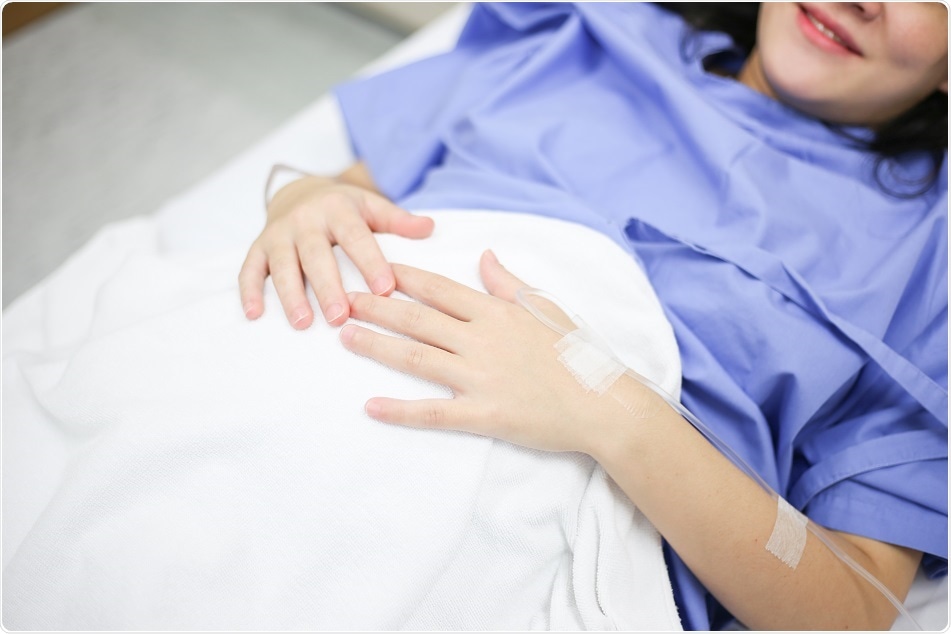Jan 26 2018
A recent study has found that changes in microbial communities within the reproductive tract of pregnant women were strongly linked to premature birth.

Credit: Peerawit/ Shutterstock.com
A recent study has found that changes in microbial communities within the reproductive tract of pregnant women were strongly linked to premature birth.
Researchers from Imperial College London have found methods by which assessing these bacterial changes can lead doctors to predict if a woman would deliver prematurely and prepare themselves accordingly.
The study titled “Vaginal dysbiosis increases risk of preterm fetal membrane rupture, neonatal sepsis and is exacerbated by erythromycin” appeared in the latest issue of the journal BMC Medicine.
Preterm labor is defined as giving birth to babies before 37 weeks of pregnancy (a total pregnancy is 40 weeks long) and waters breaking early. If premature birth occurs before the baby is ready or fully mature, it can be difficult for the baby to survive outside the womb.
Being prepared for a possible preterm birth in such cases may be helpful for the obstetrician, experts feel. Babies live within an amniotic sac or membranous sac within the womb which contains a clear fluid named amniotic fluid.
Before labor, the membrane ruptures and the amniotic fluid gushes out in what is typically called breaking waters. If this membrane ruptures before 37 weeks, and the birth is taking a long time, there is a risk of the bacteria entering the hitherto sterile amniotic sac from the opening and causing severe infection in the baby.
Waters breaking early has now been linked to this altered bacterial environment in the vaginas of hundreds of participating pregnant women in the study. This altered bacterial growth could also be responsible for infections caused in babies born prematurely, such as deadly neonatal sepsis.
The study shows that all women at this time (whose waters have broken before full term) are given standard antibiotics as per guidelines, and while in some it may be beneficial in reducing infections, in others it may cause harm.
In this small number of women, the antibiotics kill off some helpful or friendly bacteria that live in the vagina. This alters the microbial balance in the vagina causing harmful bacteria to start proliferating, which can be dangerous for the baby.
To avoid this, researchers suggest that blanket antibiotics should not be used in pregnant mothers who have ruptured their amniotic membranes before term (breaking waters), and other methods to protect from infection need to be adopted.
Researchers from the Institute of Reproductive and Developmental Biology (IRDB) at Imperial College London, looked at a sample of 250 pregnant women. They took swabs from the vaginas of these women at different points during their pregnancy and before and after delivery.
Crucially, our findings identify two different groups of women with premature rupture – one group in which targeted antibiotics may be beneficial and the other in which this same treatment may actually be detrimental.”
Dr David MacIntyre, Imperial College London
They looked at the bacterial growth within the vaginas of these women and how these were altered with time, as well as the effect of antibiotics to prevent infections from early ruptured membranes.
Among these 250 women, 27 went on to deliver prematurely. A further 87 women were studied, who had experienced premature rupture of the membranes and were treated with antibiotics as per standard NHS policy.
They were mainly treated with oral erythromycin, four times a day for 10 days. These patients were all treated at the Queen Charlotte's and Chelsea Hospital and Chelsea and Westminster Hospital.
Results corroborated with earlier studies showing that during pregnancy the vaginal flora mainly consists of Lactobacillus species of bacteria that is also found in the gut and in the mouth. In women who delivered prematurely, there were low levels of Lactobacilli colonies and an increase in harmful bacteria such as Staphylococcus and Streptococcus.
Swab samples were taken before and after 48 hours, one week and two weeks of treatment with the erythromycin due to premature rupture of membranes. The team noted that these women who had Lactobacillus before being treated, now had a more diverse range of microbes with reduction in lactobacillus counts.
However, women who had lower counts of lactobacillus before being treated with erythromycin showed beneficial effects with erythromycin treatment. In these women, the harmful bacterial counts decreased with antibiotic usage.
The study also observed that mothers who had higher counts of lactobacillus in their vaginas, gave birth to babies with a lower risk of sepsis compared to mothers who had more colonies of Streptococcus and E. coli in their vaginas.
Source
https://www.eurekalert.org/pub_releases/2018-01/icl-pbl012318.php